Red light therapy has been extensively studied for its promising results for wound healing, hair growth, hormone balance, sun damage, pain, and inflammation, to name a few. These potential benefits have allowed red light therapy at home to get traction in a market saturated with supplements, herbal extracts and tinctures, and alternative fitness equipment.
To get the most out of trying red light therapy at home, the right type of red light therapy device is necessary. What factors do you need to consider when choosing red light therapy at home? Let’s have a look.
First of all, let’s understand how red light therapy works
Red light therapy is a non-invasive, red and near-infrared light treatment that uses low-level red light to stimulate cellular activity and promote healing in the body. The red light penetrates deep into the skin and can help increase circulation, reduce inflammation, promote wound healing, and encourage the production of collagen and elastin, amongst various other benefits that promote youthful, healthy, clear skin.
Key factors to consider when choosing a red light therapy device:
1. Irradiance
Irradiance is the amount of energy a specific part of your body receives over a set period while using the device. Think of it as the rate of energy delivered. This is perhaps the most defining factor when considering red light therapy at home since higher irradiance can result in better results in less time.
The most used format to measure irradiance is mW/cm2 or milliwatts per square centimetre, e.g. 80 mW/cm2. However, just stating the irradiance measurement means nothing if the distance is not provided. Some red light therapy devices have a high mW/cm2 reading on the surface of the device and not on the object exposed to it.
2. Frequency
In typical red light therapy devices, the range of frequency used is from 633 nm (a deep red that penetrates the skin and acts on mitochondria) to 850 nm (a near-infrared light penetrating deeper into tissue). This range is standard in many red light therapy devices because most of the most-desired benefits, like anti-aging, revolve around it. Red light wavelengths penetrate the skin and promote collagen production and wound healing. Near-infrared light, on the other hand, can go deeper, targeting deeper wounds and joint or muscle pain. Lower frequencies such as blue wavelengths, while providing more superficial penetration, can also be effective for treating skin issues like acne and oil regulation.
Recent studies have provided more specific insights into which other wavelengths within this range are most effective. For instance, a significant study published in the Journal of Biological Chemistry tested red light therapy at multiple wavelengths including 670nm, 728nm, 770nm, 830nm, and 880nm. It was found that 670nm and 830nm were particularly effective, enhancing the chemical processes thought to be influenced by red light therapy, such as the activation of cytochrome c oxidase. Conversely, 728nm was shown to be among the least effective. Another study in Lasers in Medical Science explored the efficacy of 635nm, 730nm, 810nm, and 980nm. The results indicated that 635nm and 810nm were effective in stimulating healing processes, while 730nm and 980nm were less effective. These findings are crucial as they align with the expected absorption rates by key cellular components involved in healing and rejuvenation.
By integrating such specific research data, we can better understand which wavelengths are most beneficial and why, thus optimising the therapeutic outcomes of red light therapy for various medical and cosmetic applications, such as skin issues like acne and oil regulation.
3. Treatment coverage area
Will the treatment be for the face or the whole body? While many would go for smaller devices to treat wrinkles and stretch marks, others may opt for bigger ones if they want to maximise the use of red light therapy for muscle recovery, hair loss, hormone balance, and even joint pain.
If the budget allows, buying a red light therapy device with maximum coverage is always a better idea, as larger devices emit more light energy and better performance than smaller ones. Larger devices also allow users to access full-body red light therapy at a moment’s notice.
That isn’t to say smaller devices are poor investments. Some red light therapy devices are portable and let users take them to work, a friend or relative’s house, or even abroad.
4. Quality of the product
Quality is not something to overlook when it comes to tools, supplements, and devices designed for the human body.
As such, the rise of trying red light therapy at home has made the market vulnerable to products produced solely for cashing in on the trend. Always look for standards or certificates that attest to the device’s authenticity and safety to prevent buying a fake or unsafe red light therapy device.
Standards to look out for include those relating to the safety of the parts used and those that refer to light calibration.
5. Customer feedback
Lastly, customer satisfaction and testimonials can show how a particular red light therapy device works in real life. Some customers leave details regarding results, ease of use, actual light intensity, and whether the device is prone to damage or requires some maintenance investment.
Customers will also let you know if the company offers customer-friendly returns and replacement procedures.
Our red light therapy devices
Here at Aesthetic Bureau, all of the medical IPL and LED red light therapy machines we manufacture are included in the ARTG (Australian Therapeutic Goods Administration).
Xen LED

Our Xen LED is the only medical aesthetic system in Australia that utilises the latest LED technology. This allows us to pack a much higher density of light-emitting diodes (LEDs) on our units than our competitors. While other systems on the market today pack only 1,800 LEDs maximum, the Xen LED packs 10,500 LEDs on ONE head. This gives it the ability to deliver the most optimised and high-intensity treatments with three clinically proven wavelengths.
Pearl Xen

Pearl Xen is our smaller and more portable system that similarly contains a higher number of LEDs than our competitors. While it is powerful for an LED face mask, its use is limited to the face.
Total Xen

To gain the full health benefits of photobiomodulation (PBMT), a whole-body LED system such as the Total Xen is optimal. Whole body photobiomodulation therapy has been extensively studied in over 5,000 laboratory studies and more than 500 published double-blind, randomly controlled studies.
Experts agree that PBMT offers a wide range of benefits, including:
All of Aesthetic Bureau’s Xen products feature specific wavelengths of light that are most clinically backed for their therapeutic benefits —633nm and 830nm— and are ideal for both home and professional settings. All devices come with CE marks and TGA approval and have undergone rigorous third-party testing to ensure safety and efficacy.
To learn even more about the research and scientific evidence behind photobiomodulation, head on over to our new Xen website or contact us to view our devices in our showroom.
I heard that red light therapy is just a gimmick – is this true?
No, red light therapy is not a gimmick. There is a growing body of scientific research supporting red light therapy’s effectiveness for various health conditions. Numerous studies have shown this therapy to promote wound healing, reduce inflammation, improve skin health, and alleviate pain. However, as with any treatment, it’s essential to do your own research and consult with a healthcare professional before starting red light therapy.
How does the depth of penetration differ between red light and NIR light therapy, and what are the implications for treating different conditions?
When we explore the nitty-gritty of red light versus near-infrared (NIR) light therapy, it’s fascinating to see just how differently they behave when interacting with our body’s tissues and the resulting biological impacts. Red light, which ranges between 630-670nm, doesn’t go too deep—it’s kind of a skin-deep kind of light. That’s why it’s amazing at tackling surface-level conditions like psoriasis, eczema, and even helping smooth out some of those pesky fine lines and wrinkles. The reason for this is its effect on fibroblasts, those cells that pump out collagen and elastin, keeping our skin looking firm and youthful and helping wounds heal faster.
On the other hand NIR light in the wavelengths of 810-890nm penetrates deeper into the body, bypassing the superficial dermis and reaches into areas like joints and muscles. This is super useful for conditions that lurk deeper, like joint pain. Think of NIR as the kind that can get deep into the joints, tackling inflammation that’s causing all the pain and stiffness. By calming down that inflammation, NIR light might just loosen up those joints and improve mobility.
In a nutshell, it boils down to this: red light is your go-to for surface skin issues, thanks to its shallower reach, while NIR steps up for the deeper, undercover tissue problems, especially those that deal with inflammation and deeper connective tissues. We definitely need more research to totally nail down and leverage these insights, but what we already know is guiding both clinical and cosmetic applications of light therapies pretty effectively.
Who should not do red light therapy?
Red light therapy has many incredible benefits, but it isn’t for everyone.
People who take medications that increase their sensitivity to sunlight or have a medical history of eye disease or skin cancer are generally unable to undergo LED treatments.
As always, speak to your primary healthcare provider first to determine if it is safe and appropriate for you to undergo red light therapy.
References:
- Tafur J, Mills PJ. Low-intensity light therapy: exploring the role of redox mechanisms. Photomed Laser Surg. 2008;26(4):323–328. doi:10.1089/pho.2007.2184
- de Freitas LF, Hamblin MR. Proposed Mechanisms of Photobiomodulation or Low-Level Light Therapy. IEEE J Sel Top Quantum Electron. 2016;22(3):7000417. doi:10.1109/JSTQE.2016.2561201
- Ferraresi C, Kaippert B, Avci P, et al. Low-level laser (light) therapy increases mitochondrial membrane potential and ATP synthesis in C2C12 myotubes with a peak response at 3-6 h. Photochem Photobiol. 2015;91(2):411–416. doi:10.1111/php.12397
- Hu D, Zhu S, Potas JR. Red LED photobiomodulation reduces pain hypersensitivity and improves sensorimotor function following mild T10 hemicontusion spinal cord injury. J Neuroinflammation. 2016;13(1):200. Published 2016 Aug 26. doi:10.1186/s12974-016-0679-3
- Avci P, Gupta A, Sadasivam M, et al. Low-level laser (light) therapy (LLLT) in skin: stimulating, healing, restoring. Semin Cutan Med Surg. 2013;32(1):41–52.
3 thoughts on “5 Factors To Consider When Choosing A Red Light Therapy Device”
Pingback: Photobiomodulation or Light Therapy for Inflammation and Pain – Peace x Piece Wellness Coaching







Pingback: Photobiomodulation or Light Therapy for Inflammation and Pain - Peace x Piece Wellness Coaching
Pingback: Everything You Need to Understand About the Red Light Therapy - Blog da Dilma